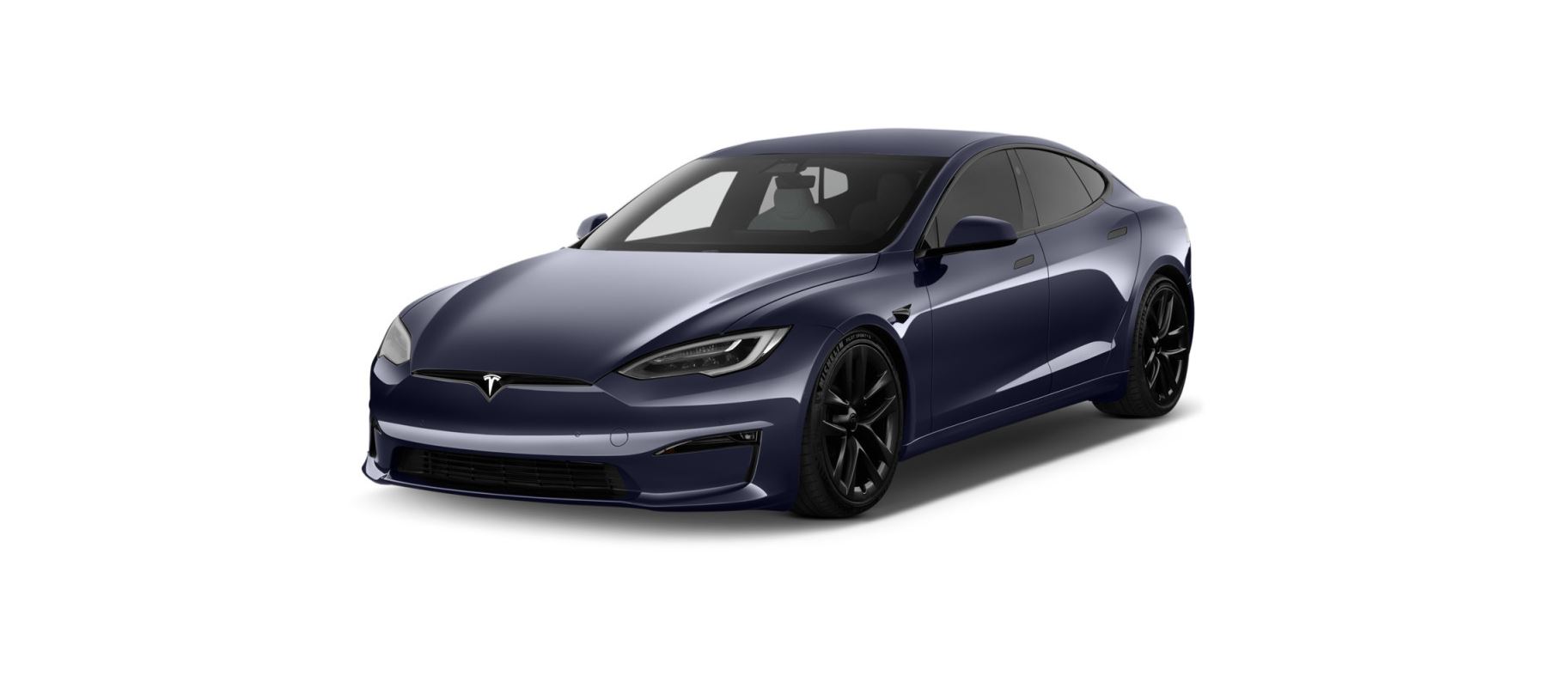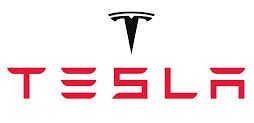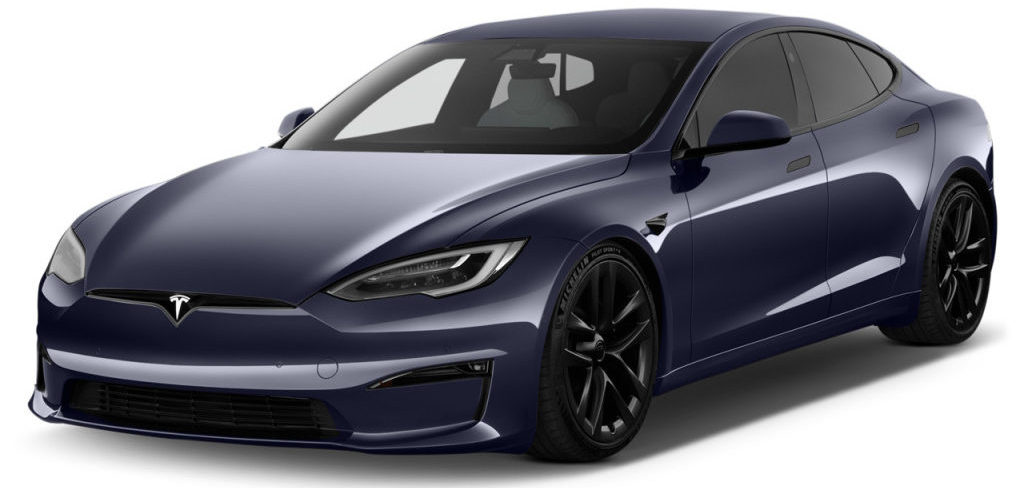2021 Tesla Model S Airbags
Location of Airbags
Airbags are located in the approximate areas shown below. Airbag warning information is printed on the sun visors.
Model S is equipped with an airbag and lap/shoulder belt at both front seating positions. The airbag is a supplemental restraint at those seating positions. All occupants, including the driver, should always wear their seat belts whether or not an airbag is also provided at their seating position to minimize the risk of severe injury or death in the event of a crash.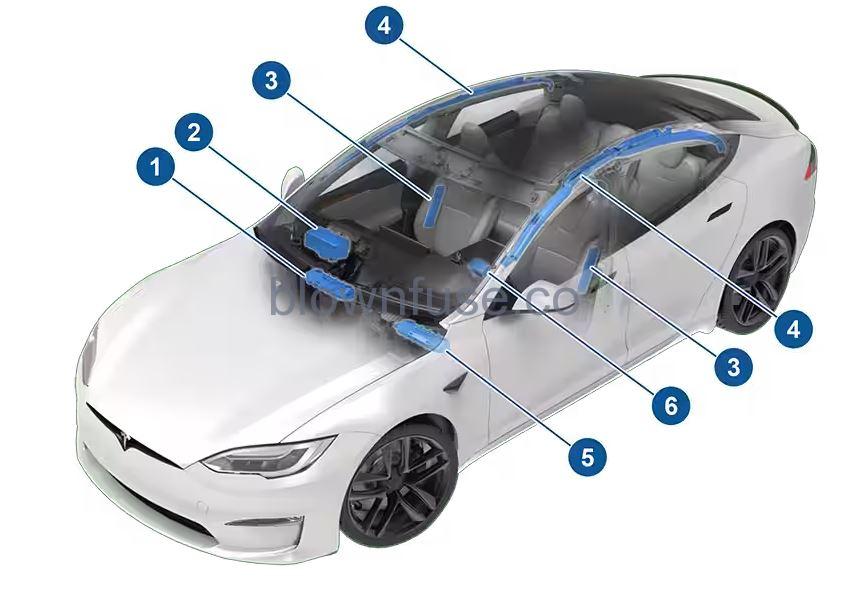
- Passenger knee airbag.
- Passenger front airbag.
- Side airbags.
- Curtain airbags.
- Driver’s knee airbag.
- Driver’s front airbag.
How Airbags Work
Airbags inflate when sensors detect an impact that exceeds deployment thresholds. These thresholds are designed to predict the severity of a crash in time for the airbags to help protect the vehicle’s occupants. Airbags inflate instantly with considerable force accompanied by a loud noise. The inflated bag, together with the seat belts, limits movement of occupants to reduce the risk of injury.
Front airbags are not ordinarily designed to inflate in rear collisions, rollovers, side collisions and when braking heavily or driving over bumps and potholes. Likewise, front airbags may not inflate in all frontal collisions, such as minor front collisions, underride collisions, or minor impacts with narrow objects (such as posts or poles). Significant superficial damage can occur to the vehicle without the airbags inflating and, conversely, a relatively small amount of structural damage can cause airbags to inflate. Therefore, the external appearance of the vehicle after a collision does not represent whether or not the front airbags should have inflated.
Types of Airbags
Model S has the following types of airbags:
- Front airbags: The front airbags are designed to reduce injuries if larger children or adults are riding in the front seats. Follow all warnings and instructions related to seating a child on the front passenger seat (if permitted in your market region).
- Knee airbags: Knee airbags and the front airbags work together. The knee airbags limit the forward motion of the front seat occupants by restricting leg movement, thereby positioning the occupants so that the front airbags work more effectively.
- Side airbags: Side airbags protect the thorax region of the torso and the pelvis. They inflate only if a severe side impact occurs. Side airbags on the non-impacted side of the vehicle do not inflate.
- Curtain airbags: Curtain airbags help protect the head. Curtain airbags on both the impacted and non-impacted side of the vehicle inflate only if a severe side impact occurs, or if the vehicle rolls over.
Passenger Front Airbag Status
The status of the passenger front airbag displays on the touchscreen:
Controlling the Passenger Front Airbag
Model S has an occupancy sensor in the front passenger seat that controls the status of the front airbag.
| Object Classification | OCS Passenger Airbag Status* | Indicator status | Notes |
|---|---|---|---|
| Empty | OFF | PASSENGER AIRBAG OFF | |
| Object | OFF or ON | PASSENGER AIRBAG OFF or PASSENGER AIRBAG ON | Depends on material/contents. |
| Rear facing child seat designed for children up to a year old | OFF | PASSENGER AIRBAG OFF | 20 lbs (9 kg) or less |
| Forward facing child seat | OFF | PASSENGER AIRBAG OFF | 35 lbs (16 kg) or less |
| Child in a booster seat | OFF or ON | PASSENGER AIRBAG OFF or PASSENGER AIRBAG ON | 20-100 lbs (9-45 kg)* |
| Large child | OFF or ON | PASSENGER AIRBAG OFF or PASSENGER AIRBAG ON | |
| 5th percentile female or larger (by weight) | ON | PASSENGER AIRBAG ON | Over approximately 100 lbs (45 kg) |
| *If the passenger airbag status indicator does not match the situation, do not use the seat. The passenger must ride in a different seat. Contact Tesla Service. | |||
To make sure the sensing system can correctly detect occupancy status, eliminate the following:
- Objects lodged under the seat.
- Heavy objects sitting on the seat (briefcase, large purse).
- Objects wedged between the seat back and seat cushion.
- Cargo interfering with the seat.
- Aftermarket items attached to, or sitting on or between, the seat and occupant including but not limited to covers, mats, blankets, etc.
These conditions can interfere with the occupancy sensor. If you have eliminated the above possibilities, and the airbag status is still incorrect, ask passengers to ride in the rear seats and contact Tesla to have the airbag system checked.
Ensuring Accurate Occupant Classification
To help ensure an occupant in the front passenger seat can be accurately classified, the passenger must:
- Wear a seat belt.
- Sit upright on the center of the seat cushion, with shoulders resting against the seat back and legs extended comfortably in front with feet on the floor. See Examples of Correct and Incorrect Seating Positions.
- Remain positioned on the seat cushion and not lift their weight off the seat (for example, by pushing their feet against the floor or pressing on the center console or armrest to lift up).
- Never wear thick, wet, or bulky clothing (such as ski wear or padded clothing).
In addition to the items listed above, the following situations can interfere with the accuracy of the occupant classification system:
- Placing a radio transmitter (for example, a hunting radio or walkie-talkie) on the front passenger seat.
- Placing an AC/DC inverter, or a device that is being powered by the inverter (for example, a cell phone, tablet, or computer) on the front passenger seat cushion.
- Placing liquid (such as a bottled drink) or food containers on a car seat when a child seat is present.
- Objects lodged under the seat or wedged between the seat back and cushion.
- Heavy objects sitting on the seat (briefcase, large purse).
- Cargo interfering with the seat.
- Aftermarket items attached to or placed between the seat and the occupant, such as covers, mats, blankets, etc.
These conditions can interfere with the occupancy sensor. If you have eliminated the above possibilities, and the airbag status is still incorrect, instruct passengers to ride in the rear seats and contact Tesla to have the airbag system checked.
- Tesla follows NHTSA (National Highway Traffic Safety Administration) recommendations that all occupants age 12 and under must ride in a rear seating position.
- Failure to follow the above instructions can adversely affect the Occupant Classification System (OCS) which can cause serious injury or death.
- If the front passenger airbag is not turning on or off as expected, do not seat a passenger in the front passenger seat. Contact Tesla Service.
- To ensure accuracy of the occupant detection system, do not make any modifications to the front passenger seat.
- Do not use seat covers on Model S. Doing so could restrict deployment of the seat-mounted side air bags if a collision occurs. It can also reduce the accuracy of the occupant classification system.
Examples of Correct and Incorrect Seating Positions
Correct seating position: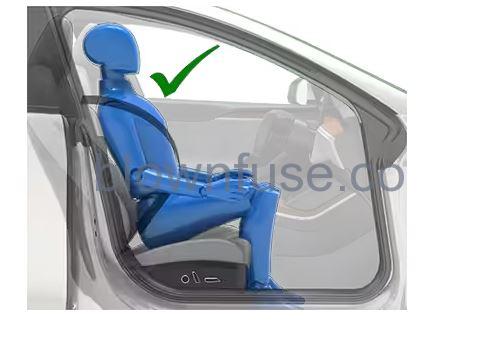
Incorrect seating position – the passenger’s feet must be on the floor: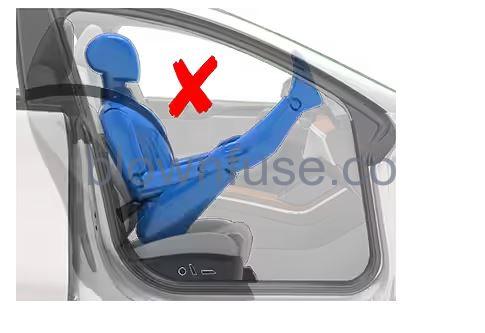
Incorrect seating position – the passenger must not slide forward on the seat cushion: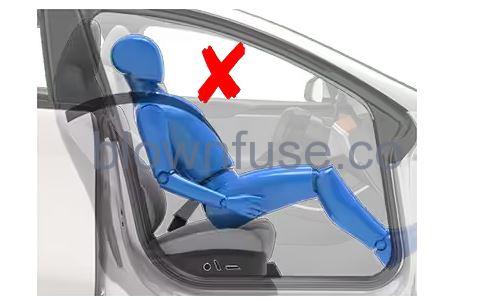
Incorrect seating position – the passenger must not recline the backrest to a laying down position when the vehicle is moving: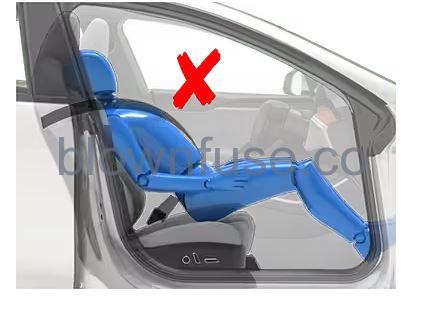
Inflation Effects
After inflation, the airbags deflate to provide a gradual cushioning effect for the occupants and to ensure the driver’s forward vision is not obscured.
If airbags have inflated, or if your vehicle has been in a collision, always have the airbags, seat belt pre-tensioners and any associated components checked and, if necessary, replaced by Tesla.
In a collision, in addition to the airbags inflating:
- Doors unlock, and the door handles extend.
- Hazard warning lights turn on.
- Interior lights turn on.
- High voltage is disabled (you must contact Tesla Service to restore high voltage power).
Airbag Warning Indicator
Airbag Warnings
- Do not place objects over or near airbags because any such objects could cause harm if the vehicle is in a crash severe enough to cause the airbag to inflate.
- All occupants, including the driver, should always wear their seat belts, whether or not an airbag is also provided at their seating position, to minimize the risk of severe injury or death in the event of a collision.
- Front seat occupants should not place their arms over the airbag module, as an inflating airbag can cause fractures or other injuries.
- Do not use seat covers on Model S. Doing so could restrict deployment of the seat-mounted side air bags if a collision occurs. It can also reduce the accuracy of the occupant detection system and the noise-canceling microphones, if equipped.
- Airbags inflate with considerable speed and force, which can cause injury. To limit injuries, ensure that occupants are wearing seat belts and are correctly seated, with the seat positioned as far back as possible. The National Highway Traffic Safety Administration (NHTSA) recommends a minimum distance of 10″ (25 cm) between an occupant’s chest and an airbag.
- Children should not be seated on the front passenger seat. Follow all regulations in your region for the appropriate way to seat a child based on the child’s weight, size, and age. The safest place to seat infants and young children is in a rear seating position. Seating an infant or child on a seat equipped with an operational front airbag can cause serious injury or death.
- To ensure correct inflation of the side airbags, maintain an unobstructed gap between an occupant’s torso and the side of Model S.
- Passengers shouldn’t lean their heads against doors. Doing so can cause injury if a curtain airbag inflates.
- Do not allow passengers to obstruct the operation of an airbag by placing feet, knees or any other part of the body on or near an airbag.
- Do not attach or place objects on or near the front airbags, the side of the front seats, the headliner at the side of the vehicle, or any other airbag cover that could interfere with inflation of an airbag. Objects can cause serious injury if the vehicle is in a collision severe enough to cause the airbag to inflate.
- Following inflation, some airbag components are hot. Do not touch until they have cooled.
